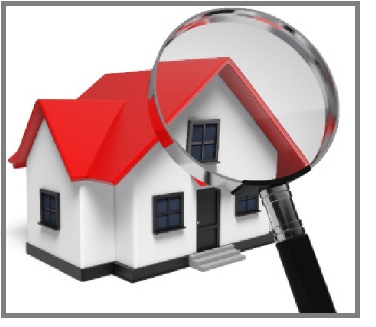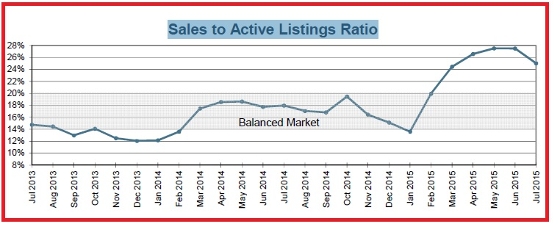Finding the perfect home doesn't happen in one day. It takes careful planning and lots of work. Fortunately, there are a number of things you can do to simplify the process.
1. Things to Consider Before Starting Your Search
What Features Do You Need?
Do you need an extra bathroom, a garage, a fenced backyard, or lower utility bills? Do you want a fireplace, a short drive to work, or maybe minimal yard work? Once your list is complete, decide what’s most important to you.
What’s the Ideal Location?
Where you live obviously affects your life
style; it’s also one of the most significant influences on the value of your home. Your choice of location may be somewhat limited by the price you can afford. Even so, make sure to consider such things as distance to work, schools, shopping and entertainment.
What Kind of Home?
What type of property do you want? A single-family detached home is attractive to many people because it typically provides more living space and land. On the other hand, a condominium may be a more appropriate choice for you, with an emphasis on maintenance-free living. Determine what type of home best suits your desired lifestyle and budget.
What’s Your Budget?
How much do you want to spend? Just as importantly, how much do you have to spend? Note there are numerous additional expenses (detailed below) that you’ll pay to complete the purchase of a home.
2. Choosing a REALTOR®
A REALTOR® can help you answer all of these questions and help you navigate through what can be a complicated business transaction. Start by finding REALTORS® in your city by using CREA’s handy search tool. Then, talk to some of them and compare their services. It’s important that you’re comfortable and confident with the agent you choose.
3. Searching For a Home
A REALTOR® will use various tools to try and find properties that meet your specifications. The most important is a local Board’s MLS® (Multiple Listing Service®) System. Your REALTOR® can quickly search through numerous properties available for sale in specific areas to find suitable listings; that is, houses that best match your needs, choice of neighbourhoods and price range. You can also view listings in Board MLS® Systems that are advertised on the national REALTOR.ca web site.
4. Seeing Houses
When you select a property and decide to visit a house, there are many things to consider. Does it have all the features you want? Is the neighbourhood what you expected? Try to picture your favorite furnishings in a room. Remember all of the technical considerations, including:
- What type of wiring does the house have?
- What about power outlets? Different appliances use different types.
- What type of heating system does it use? Heating costs can vary drastically by type.
- Have the roof and foundation been well maintained?
- What condition are the windows in?
- What about the plumbing?
There are numerous other things to consider as well. If you don't have time or don't feel comfortable doing it, home inspection services are available for a reasonable fee. Having a qualified home inspector look at the house is always a good idea. The older the home, the greater the need for professional inspection.
5. Making an Offer
Once you find a house you want to make your home, your REALTOR® can help you develop an offer. In the offer, you should specify how much you're willing to pay. State when the offer expires and suggest a closing date for the transaction. You can also propose some condi
tions on the offer. Some common types of conditions are:
- Getting a suitable mortgage (include the amount, interest rates and any other figures you feel important);
- Selling your current home (the seller may continue to look for a buyer, but will give you the right of first refusal);
- The seller providing a current survey, or a "real property report," showing that there are no encroachments on the property;
- The seller having title to the property (your lawyer will check this out when she conducts a title search to see if there are any liens on the property, easements, rights of way or height restrictions);
- If there’s a septic system, the seller having a health inspection certificate, stating that the system meets local standards;
- An inspection by a qualified engineer, should you have any doubts about the home's safety and construction; and
- Any inclusions of appliances and other items - basically, what stays and what goes.
You will need to present a deposit along with your offer. An appropriate deposit will show your good faith to the seller. Note that the seller's agent, if they are represented by one, is bound by law to bring all offers to the seller's attention.
6. If Your Offer is Accepted
After your offer is accepted and all conditions met, the offer becomes binding on both sides. If you later refuse to honour the agreement, you may lose your deposit or might be sued for damages. Before signing, make sure you understand and agree with all terms of the offer.
Before the property can formally change hands, there are still a few things to do. Be prepared to furnish proof to your lender that you’ve insured your new house. On or before closing day, both side’s lawyers will arrange to transfer title of the property from the seller to you. The mortgage money will be transferred to your lawyer's trust account, and then to the seller, and your lawyer will bill you all additional expenses such as land transfer taxes or outstanding legal fees.
At this time, be sure to check with your lawyer that everything is as stated in the offer-to-purchase.
Once you're satisfied and the keys to the front door are in your hands, there's nothing else to say, except welcome home!
Extra Expenses
No matter what type of home or property you're buying, plan on some extra expenses.
- A land transfer tax (a sales tax on property) in certain provinces
- A mortgage broker's fee
- An appraisal fee
- Surveying costs (if the seller couldn't come up with a current survey)
- A high-ratio mortgage insurance premium
- An interest adjustment. (Mortgages are normally calculated from the first of each month. If your closing date is the same as the beginning of your mortgage, there will be no adjustment. However, if your closing date is July and you move in on June 15, those last 15 days are the interest adjustment period. Your lender will expect you to cover the cost of the interest during that time.)
- Reimbursement to seller for the unused portion of any prepaid property taxes or utility bills
- Legal fees, and, if applicable, REALTOR® fees
(The comments contained on this page are for informational purposes only and do not constitute legal advice.)







